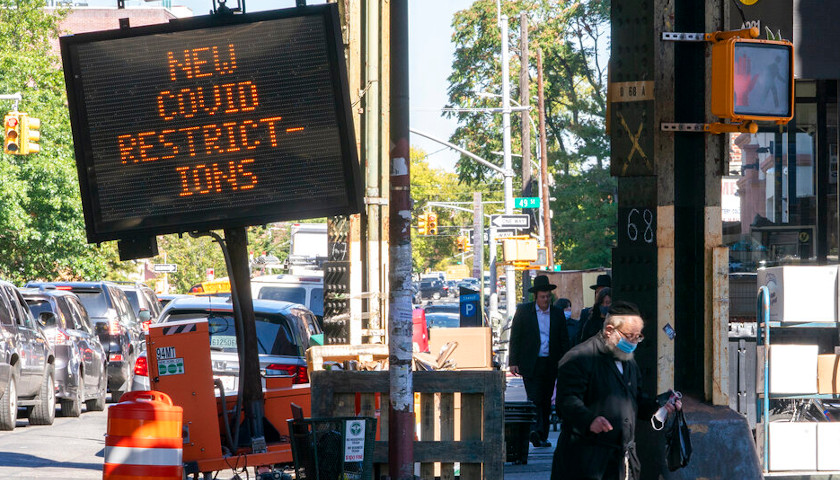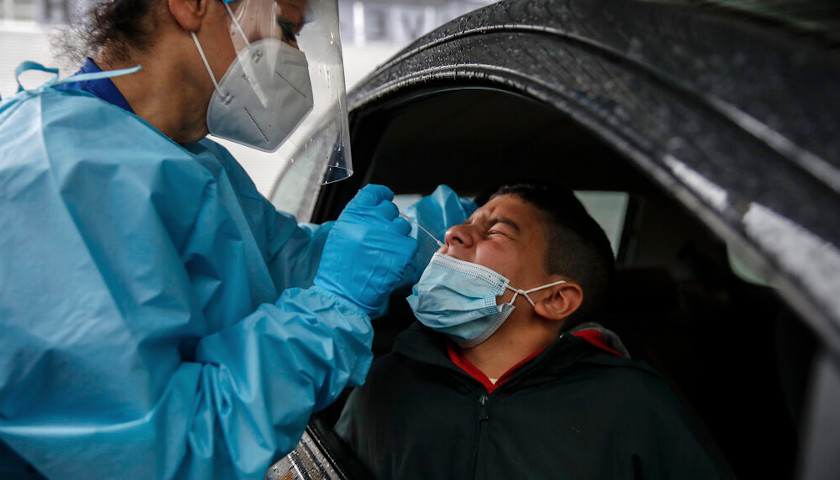by David Crary, Carla K. Johnson and Geir Moulson
Coronavirus cases around the world have climbed to all-time highs of more than 330,000 per day as the scourge comes storming back across Europe and spreads with renewed speed in the U.S., forcing many places to reimpose tough restrictions they had eased just a few months ago.
Well after Europe seemed to have largely tamed the virus that proved so lethal last spring, newly confirmed infections are reaching unprecedented levels in Germany, the Czech Republic, Italy and Poland, and most of the rest of the continent is seeing similar danger signs.

France imposed a 9 p.m. curfew on Paris and other big cities. Londoners face new restrictions on meeting with people indoors. The Netherlands closed bars and restaurants this week. And the Czech Republic and Northern Ireland shut down schools.
In the United States, new cases per day are on the rise in 44 states, with the biggest surges in the Midwest and Great Plains, where resistance to wearing masks and observing other social distancing practices has been running high. Deaths per day are climbing in 30 states.
“I see this as one of the toughest times in the epidemic,” said Dr. Peter Hotez, an infectious-disease specialist at the Baylor College of Medicine in Texas. “The numbers are going up pretty rapidly. We’re going to see a pretty large epidemic across the Northern Hemisphere.”
Dr. Anthony Fauci, the U.S. government’s top infectious-disease expert, said Americans should think hard about whether to hold Thanksgiving gatherings.
“Everyone has this traditional, emotional, warm feeling about the holidays and bringing a group of people, friends and family, together in the house indoors,” he said on ABC’s “Good Morning America.” “We really have to be careful this time that each individual family evaluates the risk benefit of doing that.”
According to Johns Hopkins University, new cases in the U.S. have risen from about 40,000 per day on average to more than 52,000 over the past two weeks. Deaths were relatively stable over the same period, at around 720 a day. Worldwide, deaths have fallen slightly to about 5,200 a day.
The head of the World Health Organization’s Europe office urged governments to be “uncompromising” in controlling the virus. He said most of the spread is happening because people aren’t complying with the rules.

“These measures are meant to keep us all ahead of the curve and to flatten its course,” Dr. Hans Kluge said, while wearing a mask. “It is therefore up to us to accept them while they are still relatively easy to follow.”
Europe’s financial markets fell sharply Thursday on concerns that the new restrictions will undercut the continent’s recovery, and stocks slumped in afternoon trading on Wall Street.
The Czech Republic confirmed more than 9,500 new virus cases on Wednesday, over 900 more than the days-old previous record. The government announced the military will set up a virus hospital at Prague’s exhibition center.
In France, which reported over 22,000 new infections Wednesday, President Emmanuel Macron put 18 million residents in nine regions, including Paris, under a curfew starting Saturday.
Italy set a new daily record for infections and recorded the highest daily death toll of this second wave, adding 83 victims to bring its official count to nearly 36,400, the second-highest in Europe after Britain.
In Britain, London and seven other areas face restrictions that will mean more than 11 million people will be barred from meeting with anyone indoors from outside their households and will be asked to minimize travel starting this weekend.
European nations have seen nearly 230,000 confirmed deaths in total from the virus, while the U.S. has recorded nearly 217,000, though experts agree the official figures understate the true toll.
Thus far in the new surges, deaths have not increased at the same pace as infections.
For one thing, it can take time for people to get sick and die of the virus. Also, many of the new cases involve young people, who are less likely than older ones to get seriously ill. Patients are benefiting from new drugs and other improvements in treating COVID-19. And nursing homes, which were ravaged by the virus last spring, have gotten better at controlling infections.
But experts fear it is only a matter of time before deaths start rising in step with infections.
“All of this does not bode well,” said Josh Michaud, associate director of global health policy with the Kaiser Family Foundation in Washington. “Rapid increases in cases like we’re seeing now are always followed by increases in hospitalizations and deaths, which is what is likely to occur across much of Europe and the U.S. in the coming weeks and months.”
Peter Hotez, the Baylor expert, said he worries that the nearly three-month transition period after the Nov. 3 presidential election could weaken the fight against the virus.
“There’s good chance we’ll have a lame duck government,” Hotez said. “We haven’t had much of a national strategy to begin with. … People are going to be worried, scared and feeling abandoned by the federal government.”
The pandemic continues to cause disruptions in the U.S. election campaign. Kamala Harris, the Democratic vice presidential nominee, said she would suspend in-person events until Monday after two people associated with the campaign tested positive for coronavirus.
Some of the U.S. regions hit hardest by the new surge had largely avoided infections earlier in the pandemic.
Among them is Gove County in Kansas, which has had to send several patients, including Sheriff Allan Weber, to hospitals in other towns. The county’s 22-bed medical center has only a few beds dedicated to virus patients and not enough staff to monitor the most serious cases around the clock.
Besides the sheriff, the county’s emergency management director, the hospital CEO and more than 50 medical staff have tested positive. Even so, some leaders are reluctant to stir up ill will by talking about how often friends and neighbors wear masks or questioning how officials responded.
Doug Gruenbacher, a Gove County doctor who contracted the coronavirus in September, said residents have concerns about personal liberties and “not wanting to be told what to do.”
“That’s part of the reason of why we love it here, because of that spirit and because of that independence,” he said. “But unfortunately, it’s something that also contributes to some of the difficulties that we’re having right now.”
– – –
David Crary, Carla K. Johnson and Geir Moulson are reporters for The Associated Press. AP writers around Europe and the U.S. contributed to this report.
About the Headline Photo: Medical staff takes a swabs as she tests a boy for COVID-19 at a drive-through at the San Paolo hospital, in Milan, Italy, Thursday, Oct. 15, 2020. Coronavirus infections are surging again in the region of northern Italy where the pandemic first took hold in Europe, renewing pressure on hospitals and health care workers. (AP Photo/Luca Bruno)





